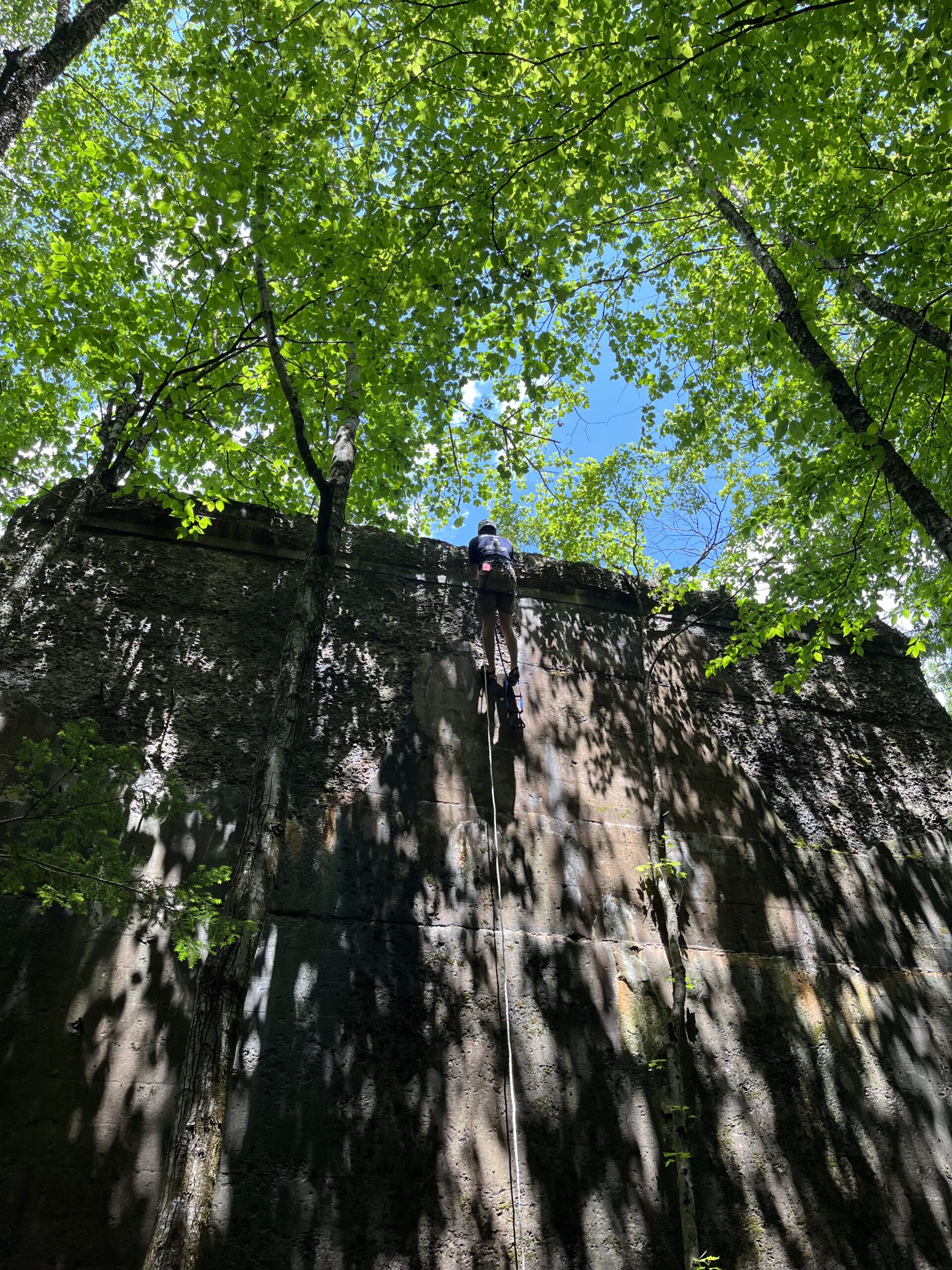I drove up to Pennsylvania yesterday to find a geocache at the top of a 30′ pillar. This is the third like this I’ve found, and a popular type of “extreme” cache hide. Most of these old pillars carried railroad tracks “back in the day”, which have since been abandoned, but the pillars (built to stand the test of time) remain, usually alongside or in the middle of rivers. Many of them have caches on top. These caches typically aren’t found very often — while there are a large number of people with the skills and equipment to ascend pillars, and also a large number of geocachers, the intersection of those two sets is relatively small. The cache we found yesterday had not been found in 4.5 years.
Typically, to climb these, you need to shoot a line over the top of the pillar, use it to pull a rope over, anchor the rope, ascend the rope using appropriate gear, and then rappel back down. Sounds deceptively simple, but throw in a fast-moving stream or river, trees to snag the line, nooks and crannies at the top where the rope can get stuck, etc., and setting the rope can get tricky. Ascending up can be physically challenging, and the technique takes some practice to master. Getting up over the edge takes upper-body strength, and rappelling back down can be scary. But it’s a great adrenaline rush, and a real feeling of accomplishment when you succeed.
I’ve used a different rappelling technique with each of the 3 pillars I’ve climbed. The tricky thing about these is that the rope is typically very low — most often running across the top of the pillar, at foot level as you start. The first technique was shown to me by someone with a lot of rope experience. You start by standing up, legs straight, with a low center of gravity, and slowly pivoting backwards until you “pop” onto the wall. It’s really cool, but really scary. With method two, you sit on top, legs dangling off the side, and then kind of roll yourself over into rappel position. Less scary, but fewer style points.
The third method, which I used yesterday, worked out well. We put an ascender on the rope above the rope protector, attached a rope (actually webbing) ladder, and dangled it over the side. I got into position by grabbing the ascender and stepping down onto the ladder to get below the rope. Not sure it will always be possible to rig this, but I felt more confident with this method than with the other two.
Anyhow, every time I do one of these, it whets my appetite to more. I hope to get a group together to tackle another one of these in the not-too-distant future.
